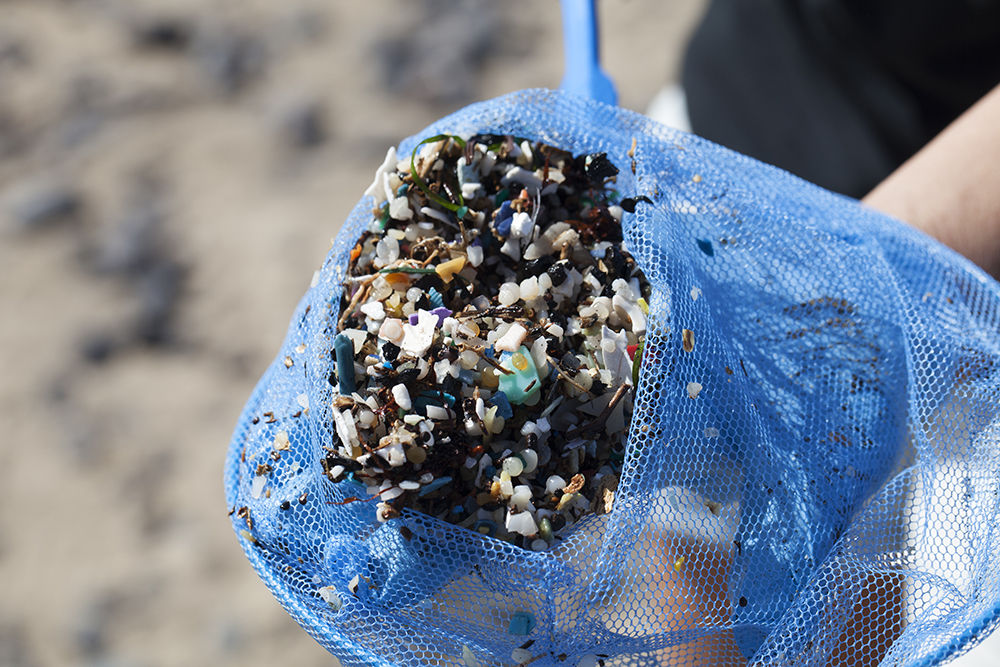The result of this research, entitled 'Microplastics in marine biota: a review', has recently been published in the prestigious international marine pollution scientific journal 'Marine Pollution Bulletin'. The article has been carried out by the Research Group on Ecophysiology of Marine Organisms (EOMAR) belonging to the University Institute ECOAQUA (ECOAQUA) of the University of Las Palmas de Gran Canaria (ULPGC). The study makes an exhaustive and in-depth review of more than a hundred bibliographical references, showing the enormous impact of these particles on all the species studied, especially on turtles.
The study, based on Kevin Ugwu Hernández's master's thesis, used 132 studies from all over the world, some of them carried out in the Canary Islands, to define the type, size, polymer and predominant colour of microplastics in 4 major groups of vertebrates (seabirds, marine mammals, turtles and fish).
The research, tutored by May Gómez Cabrera, Professor of Zoology at the ULPGC and head of the EOMAR group at the University Institute for Research in Sustainable Aquaculture and Marine Ecosystems (ECOAQUA) and Alicia Herrera Ulibarri, researcher of the EOMAR group awarded with the first prize of the Telefónica Chair of the ULPGC in 2020 for her research on marine pollution by microplastics, served to obtain the title of Master of Oceanography of the ULPGC to Ugwu Hernández.
In light of the data obtained, the review research reveals a "high impact" of microplastic particles (smaller than 5 millimetres) on marine biota. Turtles are the group of this biota with the highest incidence of microplastics in their bodies, with an average of 122 particles per individual and 88% of the total studied. This is followed by marine mammals, among which microplastics were found in 59% of the sample with an average of 10 particles per individual.
Seabirds, with polymers found in 50% of the specimens studied and with an average of 7 particles per individual, and fish, with microplastics found in 42% of the specimens investigated and with an average of 3 particles per individual, close this ranking on the impact of these materials of human origin on marine vertebrates in all the oceans and seas of the planet.
The study also reveals that most of the microplastics came from fibres, in 67.3% of the articles analysed, while another 25.7% of the studies indicated that the origin of these particles was fragments. This is indicative of failures in water purification systems, as most of the microfibres found in research around the world in the marine environment originate from poorly managed and purified wastewater.
To carry out this extensive review of bibliographic references on marine vertebrate studies, the authors of the paper, Kevin Ugwu, Alicia Herrera and May Gómez, used the Web of Science (WOS) reference search engine to find a total of 1,345 articles published worldwide on the incidence of microplastics in the four major marine vertebrate groups. Of these, 213 were used to analyse the temporal and spatial trend of the research and 132 for the purposes mentioned above.
On the other hand, 73.6% of the articles published and analysed in this ULPGC study describe microplastics with sizes of less than 2 millimetres, which for EOMAR researchers indicates rapid fragmentation processes of microplastics. This is a fatal circumstance, as the small size of the particles facilitates the entry of these materials of human origin into living organisms to a greater degree.
The EOMAR group study constitutes the first major comprehensive review in the history of modern marine biology of microplastic ingestion studies in all marine groups to define size, colour, type and predominant polymer. In addition, it is also the first time that the analysis of microplasticisms, the use of advanced technologies for their measurement and the use of QA/QC procedures that prevent secondary contamination of samples have been studied for the first time.
The findings of this study confirm that plastic pollution is undoubtedly one of the biggest problems facing marine ecosystems. The researchers who signed the article urge the administrations and corporations involved to urgently implement "real and decisive policies" to minimise the continued use of plastics by the public. In addition, they consider the involvement and participation of the world population as a whole to be "necessary" in order to develop "more environmentally friendly" habits, especially those related to the reduction of plastics.
Kevin Ugwu Hernández holds a degree in Environmental Sciences from the University of La Laguna, specialising in Auditing and Management of the Natural Environment. He studied a master's degree in Oceanography at the ULPGC, where he was associated with the EOMAR research group of the University Institute ECOAQUA, for the completion of his final master's degree work. He has presented papers at various national and international conferences, including the VII International Symposium on Marine Sciences. His current line of research focuses on the study of the impact of microplastics on marine biota.T
The journal ‘Marine Pollution Bulletin’ that produced this article, is one of the world's leading scientific journals on marine pollution. It is ranked Q1 in the field of marine biology and has an impact index of 4.049.


